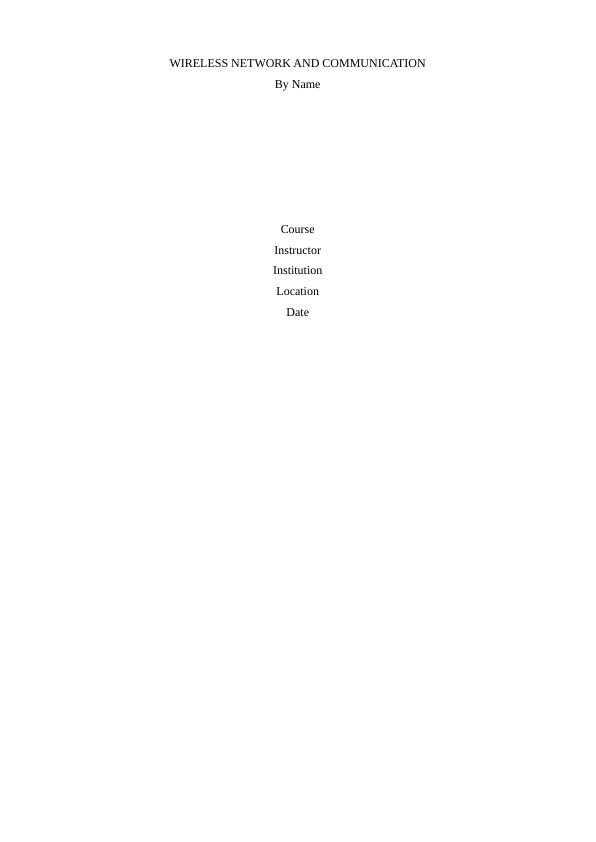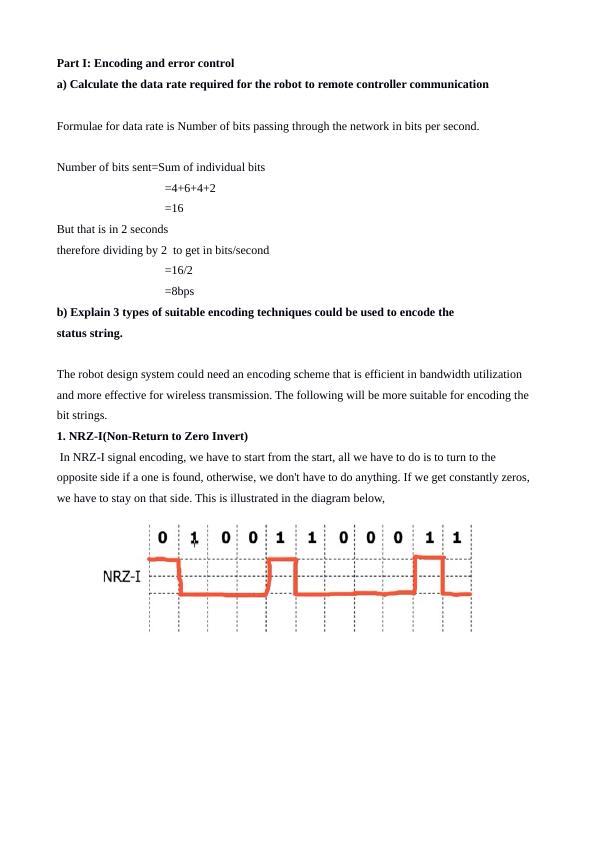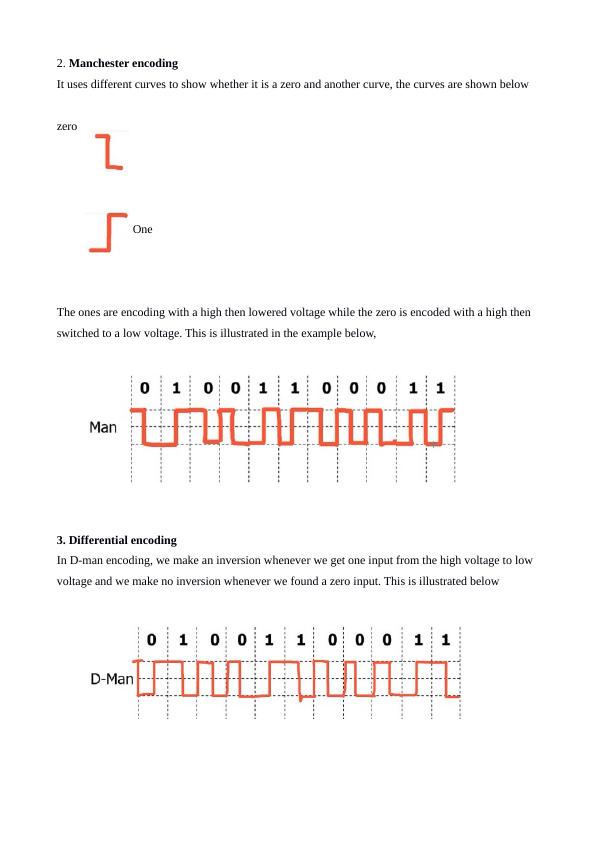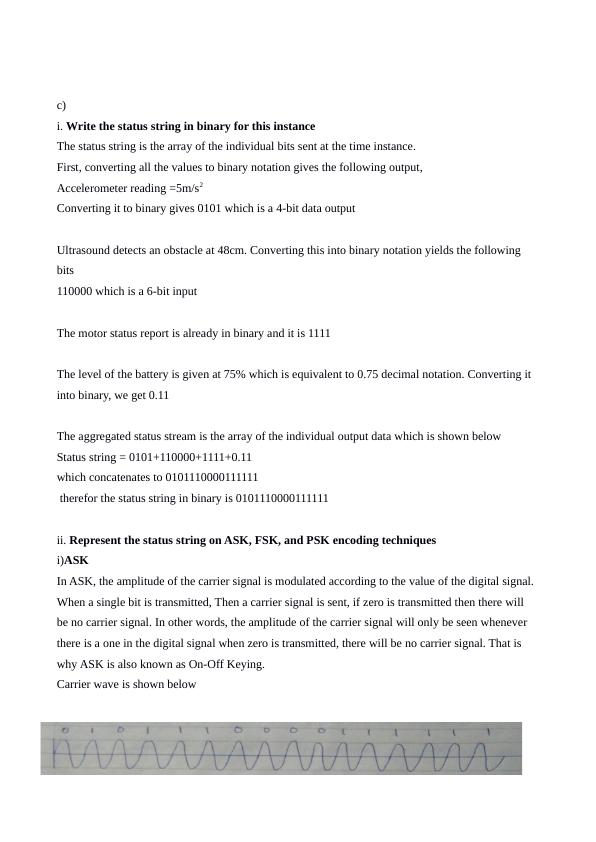Wireless Network and Communication: Encoding, Error Control, Multiplexing, and Wi-Fi
Calculate data rate, explain encoding techniques, represent status string, calculate CRC, explain error control and flow control techniques.
17 Pages2817 Words422 Views
Added on 2023-06-10
About This Document
This article covers encoding and error control techniques like NRZ-I, Manchester encoding, and differential encoding. It also explains multiplexing techniques like TDM, FDM, and CDMA, and how OFDM is different. The article also includes a Wi-Fi network design example and calculations for data rate, CRC, and subcarrier bandwidth. Suitable for students of wireless communication courses.
Wireless Network and Communication: Encoding, Error Control, Multiplexing, and Wi-Fi
Calculate data rate, explain encoding techniques, represent status string, calculate CRC, explain error control and flow control techniques.
Added on 2023-06-10
ShareRelated Documents
End of preview
Want to access all the pages? Upload your documents or become a member.
OFDM in Wireless Networks
|17
|3541
|440
Wireless Networks and Communication
|18
|1739
|486
Wireless Networks & Communications: Encoding, Error Control, Multiplexing, and Wi-Fi
|12
|1761
|358
Wireless Communication: Encoding, Multiplexing, and Wi-Fi Network Design
|14
|2004
|421
Wireless Networks and Communication: Data Rate, Encoding Techniques, CRC Calculation, and Multiplexing Techniques
|8
|2390
|475
Assignment on Multiplexing, Error and Flow Control, and Network Design
|11
|1888
|405




